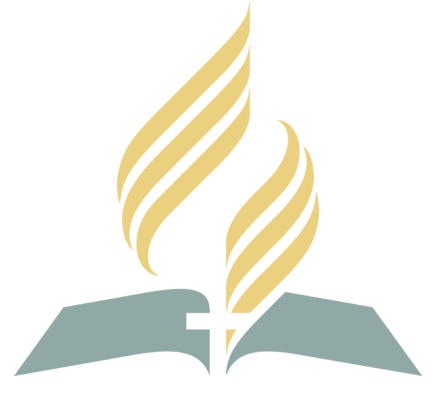WHO WE ARE
ABOUT OUR CHURCH
ABOUT OUR CHURCH

As Seventh-day Adventists, we accept the Bible as our only creed and hold certain fundamental beliefs to be the teaching of …the Holy Scriptures. Our beliefs constitute the church’s understanding and expression of the teaching of Scripture. Learn More
Every Saturday
Sabbath School: 9:30 AM
Divine Worship: 11:00 AM
We are located at :
3300 NE 23rd Street
Oklahoma City, OK 73121
Because we are a viable church within the Southwest Region Conference and because we owe to those who follow us records of their historical heritage, we of the Tenth Street Seventh Day Adventist Church can ill afford to not pause on our dedication day and give account of the growth of this church, reflecting on the services of God fearing men and women who through the Holy Spirit has shaped its development.
Historically, the Tenth Street Seventh Day Adventist Church of Oklahoma City is the culminating results of an evangelistic tent effort held in 1919. This effort was held on the corner of Northeast First Street and Lindsay. Elder M. G. Numex, W.S. North and O.B. Martin conducted the tent effort with the assistance of two Bible workers, Julia Frazer and Millicent Jordan.
Those baptized following the tent effort included Leo Payne, Fannie Jackson Williams, O. B. Meredith, Cornelius Meredith, Rosa Williams, Tom Moran, Columbus Mills, Emily Mills, Nash David, George Parks, O. P. Gipson, O. Champion and G. Evans.
In 1920 a little white church was erected on Northeast Second and Durland. The newly baptized members were organized as charter members of the new church which they named Beulah Seventh Day Adventist Church with Elder H. J. Miller as its first pastor. By Dr. Mary C. Moon 1924 the newly organized church had established a church school having as its goal the training of the head, hand and heart.
Between 1920 and 1956, Elders R. Lowden, E. Delett, W. S. Lee, O.J. Trotter, F.B. Slater, Lafayette Williams, W. W. Fordham, Leon Cox, Jeter Cox, John Wagner, Samuel Myers and H. J. Fordham served as pastors of the church. This thirty-six year span depicts the depression years of this country but did not hinder the church from continuing to grow spiritually under abled leadership.
In 1957 D. J. Dixon was serving as pastor when the little white church burned. Temporary services were held in the Old Avery Methodist Church and plans were immediately made for building a new church. By 1958 Elder Dixon and members had purchased eight (8) lots on the corner of Northeast Tenth and Kate Streets.
During 1958, the new pastor, Elder Van Runnels initiated and constructed a building on the newly purchased site. This effort was inspired following an evangelistic meeting conducted by Elder L. B. Baker. Though the new building was considered an educational building it also served as a sanctuary. In time, a need for a larger Sanctuary was evident based on increased membership and a desire to render better service to the community. In fact, by 1963 the Darcas Services had developed into the Health and Welfare Services, a fast growing source of service to the community. Because of its name, the community often confused it with Welfare Services so that by 1968 the name of Health and Welfare was changed to Community Services under the leadership of Juanita Davis. However, between 1958-1965 Elders L. G. Newton and J. H. Williams played significant parts in laying the financial foundation for a new sanctuary, with the latter encouraging individual goals of $500.00 each.
Elder D. S. Williams became the church pastor during 1965. That same year, a ground breaking ceremony was held on Northeast Tenth and Kate for a new Sanctuary to be connected to the existing Education Building. Juanita Davis was chairperson of the Building Committee. Within two years, the new sanctuary was completed. The Grand Opening and Dedication was held May 7, 1967.
Members worked hard to help defray building cost. One member, Mrs. Georgia Sanders may give vent to the attitude of most members as she raised hundreds of dollars for the new sanctuary by quilting and selling quilts to name one of her many projects, Elder O. A. Jackson followed D. S. Williams as pastor in 1968. Under his divinely inspired leadership, the church grew and a Child Development Center was established. By 1971, four years after the new sanctuary completion, a Fourth Anniversary Program was held in appreciation to the public for its support. Elder H. M. Crider was pastor. During 1978 an even greater program followed that encouraged all members far and near to attend the Homecoming Events, Elder C. M. Bailey was serving as pastor.
In 1979, Elder Alfred Booker came to Tenth Street Seventh Day Adventist Church, bringing with him the spirit of youth develop. ment and christian family life. He firmly set within the congregation a continued thrust for spiritual, mental and physical growth, placing strong emphasis on community services.
Elder Clarence Williams, the present pastor, came to the Tenth Street Seventh Day Adventist Church in 1982. Since his coming the church has become a church in action peaking in spiritual outreach, baptism, congregational nurture, membership and stewardship. Remodeling the church edifice became a total church project. Betty Smith served as chairperson for the Building Committee. Today, July 15, 1989, because of the untiring efforts of Pastor Williams, the congregation and the Building Committee, we celebrate the dedication of our new church building,